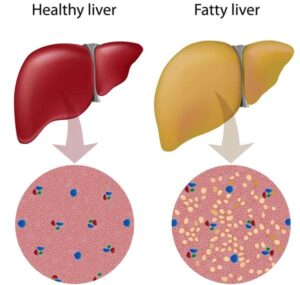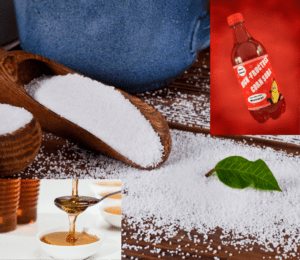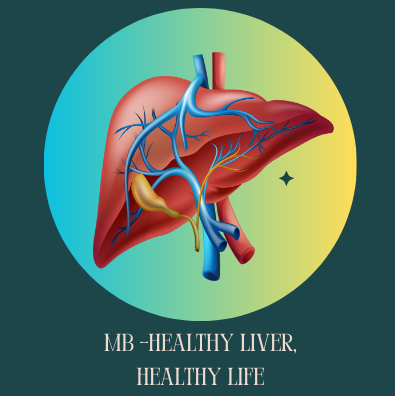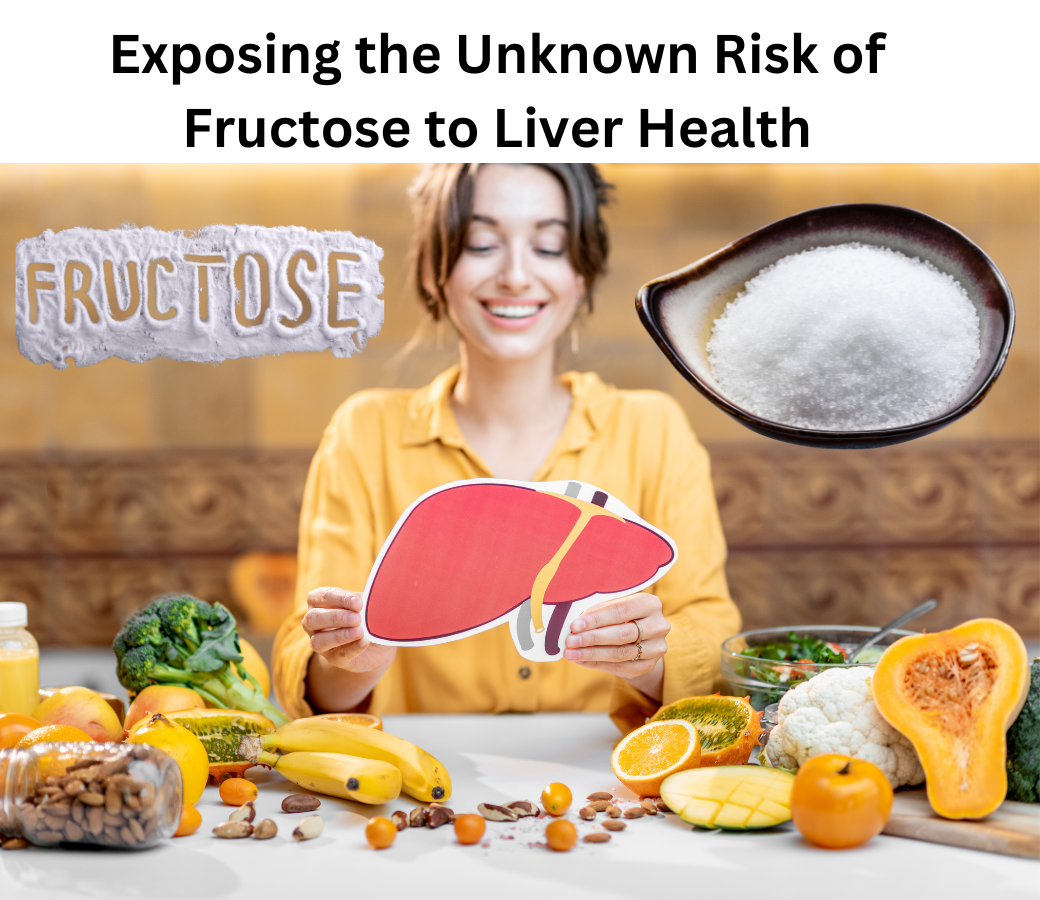Fructose: Exposing the Unknown Risk of Fructose to Liver Health
Fructose Overview
Fructose is becoming a major concern in the fields of nutrition and medicine. Fructose was once thought to be a benign natural sugar that could be found in fruits and honey, but because it’s used so widely in processed foods and drinks, it’s become a dietary villain. Fructose turns out not to be as harmless as it first appeared as we explore its hidden hazards, especially as it relates to liver health.
Recognizing Fructose: A Dual-sided Sword
Simple sugar fructose is frequently found combined with glucose to make sucrose, also known as table sugar. Fructose, which is found naturally in fruits, vegetables, and honey, is generally not harmful to health when consumed in its whole dietary form. The problem, though, comes from consuming fructose in its concentrated and isolated forms, including high-fructose corn syrup (HFCS), which is frequently added to processed foods and sugary beverages.
Fructose is mostly metabolized in the liver, as opposed to glucose, which is processed all over the body. This distinction is important because it indicates that the majority of the metabolic load of fructose is borne by the liver. Excessive fructose consumption over time can cause a number of metabolic problems that have a significant impact on liver health.
The Function of the Liver in Fructose Metabolism

The liver is an essential organ that is in charge of several metabolic functions, such as the generation of bile, detoxification, and blood sugar management. After consumption, fructose enters the bloodstream and is quickly carried to the liver. Because fructose does not significantly increase insulin sensitivity, unlike glucose, it eludes the body’s normal regulatory systems for the metabolism of sugars.
Fructose is transformed into glucose, glycogen, and fatty acids in the liver. Although this process is typical, fructose intolerance is problematic. There is a limit to how much fructose the liver can process at once. The extra fructose is transformed into fat and stored in the liver when this threshold is crossed. The condition known as non-alcoholic fatty liver disease (NAFLD) may result from this fat buildup.
The Connection Between Non-Alcoholic Fatty Liver Disease (NAFLD) and Fructose
NAFLD is a group of disorders affecting the liver that includes fibrosis, cirrhosis, and more severe types of liver inflammation (steatohepatitis) as well as simple fat buildup (steatosis). Nowadays, it is acknowledged as the most prevalent liver disease in Western nations, impacting as much as 25% of the populace. Obesity, metabolic syndrome, and type 2 diabetes are all on the rise, and they are all connected to high fructose consumption, which is also contributing to the rise in NAFLD.
Fructose contributes to NAFLD through a variety of mechanisms. Fructose metabolism in the liver produces byproducts such uric acid, which can exacerbate inflammation and oxidative stress. Triglycerides also build up as a result of the overproduction of fat in the liver, which can damage the liver and exacerbate insulin resistance. These alterations have the potential to harm and inflame liver cells over time, which would accelerate the development of NAFLD.
Fructose and Hepatic Inflammation: An Ignored Danger
The fact that fructose might increase inflammation in the liver is one of the most worrisome features of its effects. Numerous liver conditions, such as NAFLD and liver fibrosis, are significantly influenced by chronic inflammation. Research has demonstrated that a high-fructose diet can cause the liver to produce more inflammatory cytokines, which can result in a low-grade chronic state of inflammation.
Furthermore, it has been demonstrated that fructose impairs the function of the intestinal barrier, enabling endotoxins to pass through the bloodstream and into the liver. This condition, called endotoxemia, quickens the course of liver disease by exacerbating liver inflammation. If left unchecked, the vicious cycle of inflammation, oxidative stress, and fat storage can cause irreparable liver damage.
Fructose’s Function in Liver Cirrhosis and Fibrosis

Liver fibrosis, a disorder marked by an excessive buildup of scar tissue in the liver, can develop when nonalcoholic fatty liver disease (NAFLD) advances. The body is trying to heal the harm from inflammation and fat buildup by creating this scarring. Fibrosis, however, can impair liver function over time and raise the chance of developing cirrhosis, a serious and sometimes fatal illness in which the liver becomes severely damaged and loses its capacity to operate.
Studies indicate that eating a lot of fructose poses a serious risk of developing liver fibrosis. High-fructose diets have been demonstrated to cause liver fibrosis in animals, even in the absence of obesity or other metabolic abnormalities. This research emphasizes how fructose may be harmful to liver function, even in people who don’t seem to be at risk according to conventional indicators like body weight.
Cutting Back on Fructose: Essential for Liver Health
Considering the strong evidence that fructose consumption is associated with liver disease, it is imperative to minimize fructose consumption, particularly from processed foods and sugary drinks. Here are some useful advice for reducing the amount of fructose you eat:
Read Labels: Pay close attention to what is listed on food labels, particularly for those that have added sugars or high fructose corn syrup.
Select entire foods: Give priority to unprocessed, entire foods, including fruits, vegetables, whole grains, and lean meats. These foods offer vital nutrients that promote general health and have a low fructose content by nature.
Limit Sugary Drinks: Fruit juices, soda, and energy drinks are examples of beverages high in fructose. Instead, choose unsweetened beverages, herbal teas, or water.
Keep an eye on portion sizes. Fruit and other natural sources of fructose should be consumed in moderation. A balanced diet with a range of nutrient-dense foods should be your goal.
Increase Your Fiber Intake: Dietary fiber-rich foods can help slow down the absorption of fructose and lessen the damage it does to the liver. Make sure your diet is rich in whole grains, legumes, and vegetables.
In summary
Formerly thought to be a safe natural sweetener, fructose is now known to pose a hidden risk to liver health. When fructose is consumed in excess, especially in concentrated quantities seen in processed foods and sugary drinks, it can cause a series of metabolic disruptions that ultimately result in liver damage. Through proactive reduction of fructose intake and awareness of the related hazards, we can safeguard liver function and delay the emergence of illnesses such as nonalcoholic fatty liver disease (NAFLD) and liver fibrosis. Making educated food choices and giving full, unadulterated foods priority over sugary, fructose-laden substitutes are crucial for maintaining liver function.
 https://analytics.google.com/analytics/web/#/analysis/p405220706
Skip to content
https://analytics.google.com/analytics/web/#/analysis/p405220706
Skip to content 
